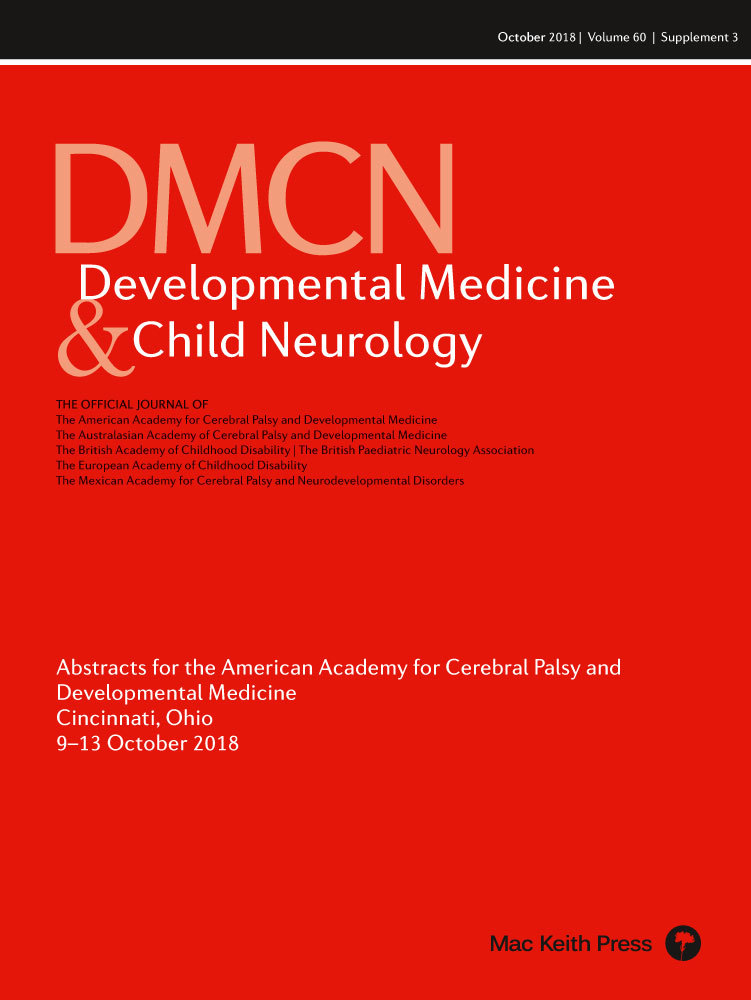Walking speed and gait pattern consistency in people with cerebral palsy transitioning to adulthood: results from the CPAT longitudinal study
L6
J Carollo1, A Tagawa1, Z Pan1, A Bodkin1, P Heyn2
1Children's Hospital Colorado, Aurora, CO, USA; 2University of Colorado Denver, Anschutz Medical Campus, Denver, CO, USA
Background and Objective(s): Children with CP as they develop and make the transition to adulthood face challenges in the areas of health and wellness, socialization, education, community living, and employment. The objective of this study was to describe how young adults with CP experience lifecourse health development (LCHD) and create key messages for pediatric rehabilitation service providers to promote children's capacities for future adult roles and healthy adult living.
Study Design: Interpretive description qualitative design.
Study Participants & Setting: A purposive sample of 23 young adults with CP, 25 to 33 years of age, (mean 28.2, SD= 2.4) (10 females). Participants varied in gross motor function, manual ability, and communication function. Eight had a bachelor's or master's degree, 11 lived by themselves or with a partner, and 9 worked independently.
Materials/Methods: Three experienced interviewers conducted 23 interviews each lasting 50–60 minutes. Seventeen interviews were with a young adult only, three with a young adult and parent, and three with a parent proxy of a young adult. Questions were framed in the context of LCHD and included: “What does healthy living or being healthy mean to you?” “What do you currently do to promote healthy living?” “Throughout your childhood and adolescence, what experiences influenced your development of abilities and interests in managing your health?” “How do you manage health (physical, mental, social) now?” and “Looking back, is there anything, any opportunity or experience, that would have helped your development of abilities even more in managing health?” Transcripts of the interviews were analyzed to identify themes. Subsequently, a one-day meeting was held with an advisory group that included 3 young adults with CP, 2 parents of young adults with CP, 2 service providers, and 1 researcher. Input from the advisory group informed our interpretive description of key messages that are meaningful and applicable to pediatric rehabilitation service providers.
Results: Four themes emerged from the interviews: i) Personal lifecourse (dynamic nature of a person who is constantly changing throughout their life), ii) Contextual lifecourse (ongoing, mutual, interdependent relationships among a person and their life contexts), iii) Everyday experiences (develop capacities for current and future healthy living), and iv) Adaptive process (healthy living as a continual process of adaptations of individuals and their contexts). Key messages for pediatric rehabilitation service providers include: a) Address healthy living across the lifecourse, b) Focus on contexts of healthy living, c) Focus on everyday experiences and experiential learning, and d) Pay attention to the timing of opportunities and experiences. Recommendations for actions were added by the research team to facilitate moving the key messages into practice.
Conclusions/Significance: Our findings generate new knowledge about LCHD of individuals with CP through early adulthood which can be applied by pediatric rehabilitation service providers.The findings emphasize the importance of coordination and continuity of health care services between pediatric and adult systems, and services and supports for desired social participation and achievement of personal goals.




